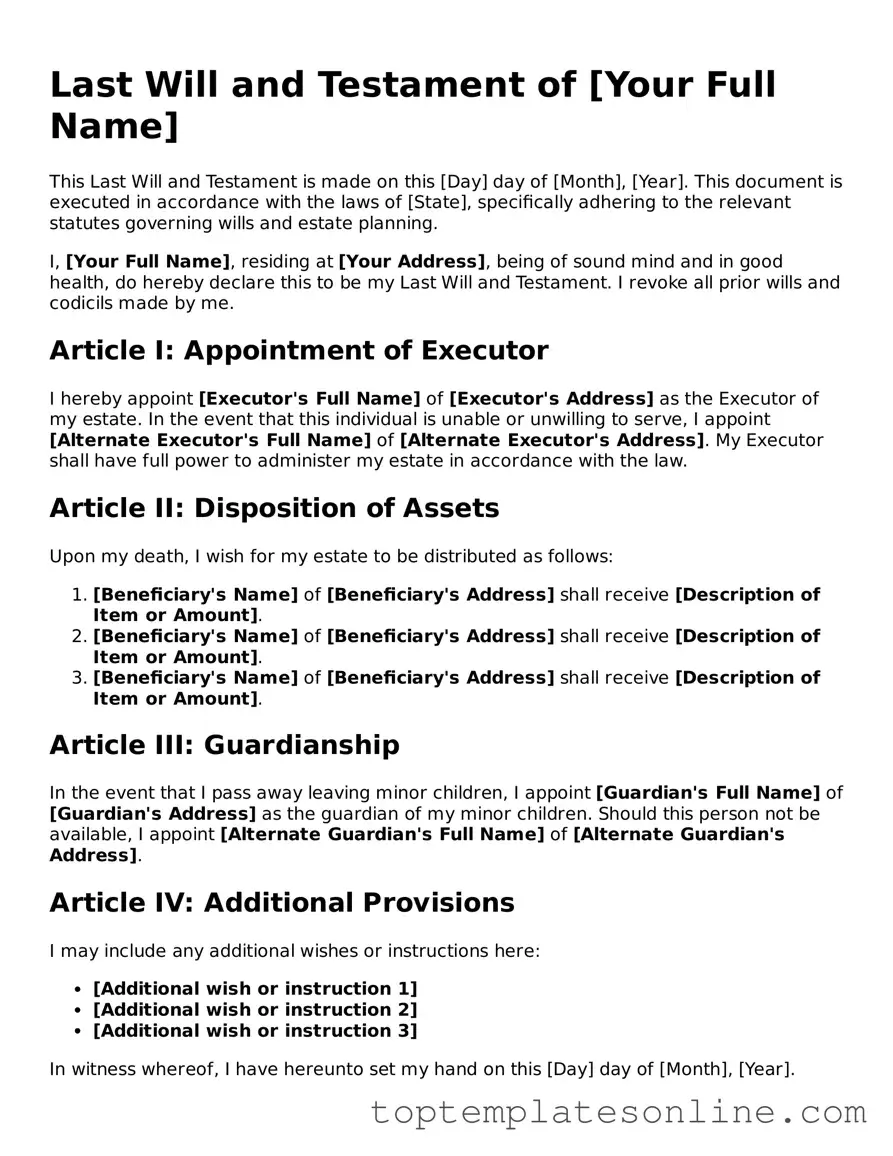Attorney-Approved Last Will and Testament Form
A Last Will and Testament is a legal document that outlines how a person's assets and affairs should be handled after their passing. This essential form allows individuals to express their wishes regarding the distribution of their property, guardianship of dependents, and other important matters. Creating a will ensures that your intentions are respected and can provide peace of mind for you and your loved ones.
Customize Last Will and Testament Here
